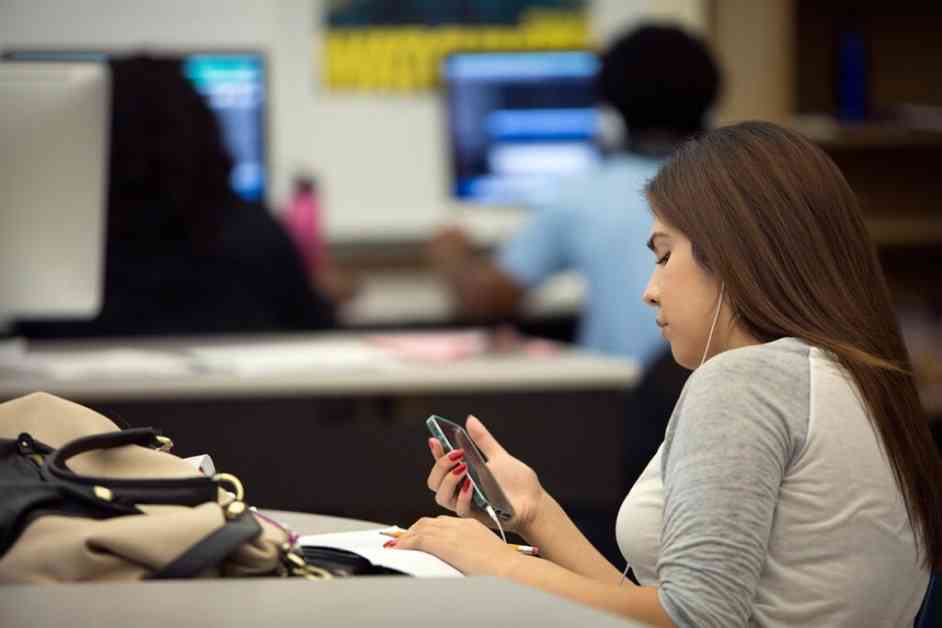California Schools Crack Down on Cellphone Use to Boost Student Focus and Engagement
In an effort to combat bullying, reduce distractions, and address smartphone addiction among students, California schools are implementing cellphone bans or restrictions across the state. This trend is gaining momentum not only in California but also in other parts of the United States as educators and policymakers recognize the negative impact of excessive cellphone use on students’ well-being and academic performance.
Subheading: Trends in Cellphone Restrictions
According to Troy Flint, spokesperson for the California School Boards Association, there is a growing trend towards restricting cellphone use in schools. Districts such as Lincoln Unified School District in Stockton, Santa Barbara Unified, San Francisco Unified, Roseville City School District, and Folsom Cordova Unified near Sacramento are among those leading the way by implementing cellphone restrictions on their campuses at the start of the school year.
The specific policies regarding cellphone restrictions vary from district to district, school to school, and even among individual teachers. Some schools require students to place their phones in electronic pouches that can only be unlocked by school staff, while others have students turn off their phones and store them in lockers or backpacks during class time. Governor Gavin Newsom has urged school leaders to take immediate action to regulate smartphone use on campus, citing concerns about the negative impact of excessive smartphone use on students’ mental health.
Subheading: Impact on Mental Health and Academic Performance
Excessive smartphone use among young people has been linked to increased anxiety, depression, and other mental health issues. Surgeon General Vivek Murthy has issued an advisory calling for measures to minimize the harm of social media and create safer online environments for children. Studies have shown that students who spend excessive time on social media and smartphones are more likely to experience mental health issues and academic challenges.
Santa Barbara Unified has prioritized mental health by implementing an “Off and Away” policy that requires students to turn off their cellphones and store them away during class time. Assistant Superintendent ShaKenya Edison emphasizes the importance of treating cellphone usage as an addiction rather than a form of defiance. The district offers counseling and therapy referrals for students who struggle with smartphone dependency.
Subheading: Positive Effects of Cellphone Bans
Parents and educators have noticed positive changes in student behavior and engagement following the implementation of cellphone restrictions. Andrea Blair-Simon, a parent in the Folsom Cordova Unified School District, praises the cellphone policy for allowing her daughter to focus on her studies and interact with peers without the distraction of smartphones. Teachers at James Lick Middle School in San Francisco have observed a significant decrease in digital bullying and classroom distractions since students were required to lock their phones in pouches at the beginning of the school day.
The United Teachers Los Angeles union supports the districtwide cellphone policy in LAUSD, emphasizing the importance of collaboration between educators, parents, and administrators in implementing these changes. Teachers nationwide have reported that cellphones are a major distraction in the classroom, impacting students’ academic performance and overall learning experience.
Conclusion:
California schools are taking proactive steps to address the negative impact of excessive cellphone use on students’ mental health and academic performance. By implementing cellphone bans or restrictions, educators aim to create a more focused and engaging learning environment where students can thrive without the constant distraction of smartphones. As this trend gains momentum across the state and the country, it is essential for schools to collaborate with parents, teachers, and policymakers to ensure the successful implementation of these policies for the benefit of all students.
